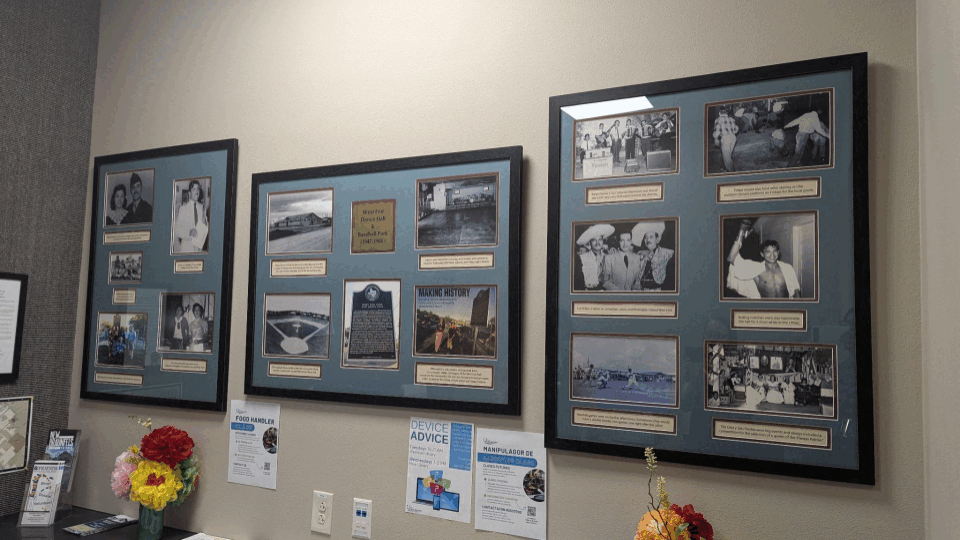In July, I kicked off the first in a series of day-long turns around clusters of small public libraries to tour their spaces and chat about how the Texas State Library and Archives Commission (TSLAC) can best support their leadership. This round, the fancy feet of Continuing Education and Consulting Team Manager Katherine Adelberg accompanied me as we spun through New Braunfels Public Library, Seguin Public Library, and Martindale Community Library.
New Braunfels Public Library
New Braunfels is perched on the brink of the Hill Country, right between San Antonio and Austin on I-35. Spanning Comal and Guadalupe counties with its 105,000 residents, it’s not only one of the fastest-growing cities, but is also regarded as one of the best 50 places to live in the United States.
Established in 1845, New Braunfels is known for its German and Hispanic heritage and contains the entire Comal River—which joins the Guadalupe River as they flow through the heart of city—41 local parks, the world-famous Schlitterbahn Waterpark, Texas’ oldest dancehall Gruene Hall, Texas’ oldest bakery Naeglin’s Bakery, the annual Wurstfest, Texas Ski Ranch, and of course New Braunfels Public Library.
The New Braunfels Public Library has a proud history dating back nearly a century, steeped in community support throughout multiple iterations as it developed to meet changing community needs. For a detailed account, visit the “About The New Braunfels Public Library” section on the library website.
Below is the highlights reel from our visit:
Seguin Public Library
Do The Swim down the Guadalupe from New Braunfels for several miles, and you’ll come ashore in the city of Seguin—found along I-10 for those traveling by car, home to 33,408 Seguinites residing in a fast–growing commercial hub.
Established in 1838, Seguin is known for its unique blending of history with modernity and is home to the Seguin Art League, Texas Theatre, Blue Lotus Winery, Windmill Farm Winery, Seguin Events Complex, Central Park Summer Concert Series, Pecan Fest Heritage Days, Holiday Stroll in addition to the Seguin Public Library.
Much like the New Braunfels library, the Seguin Public Library has a nearly century-long history. Although it began in a humble shared space in the city hall, over the years it has developed into the 43,000 square foot, two-story, state-of-the-art facility that it is today. For a detailed account of the library’s history, visit the About page on the library website.
Below is the highlights reel from our visit:
Martindale Community Library
A jump and jive into the next watershed north, Martindale is a small city of 1,225 covering just over 2 square miles along the San Marcos River. People are drawn to Martindale because of its serene agricultural and natural environment and its proximity to regional amenities.
Established in 1855, Martindale is now an oasis from the hustle-and-bustle of the I-35 corridor, where residents and visitors alike enjoy the river and the Martindale Community Library.
The Martindale Community Library began in Martindale United Methodist Church as a small lending library. With community support, the library thrived and grew into a community hub. It now blankets the town with gigabit wi-fi in addition to its collection of over 7,700 books and movies plus laptops, gaming computers, and iPads for pre-k story time! For more information, read the Lockhart Post Register’s feature articles about the library’s history and technology evolution.
Below is the highlights reel from our visit:
.gif)
***
Thank you to our gracious hosts for granting
us this time together. Be sure to join us in August to see who's next on the
dance card.





Comments
Post a Comment